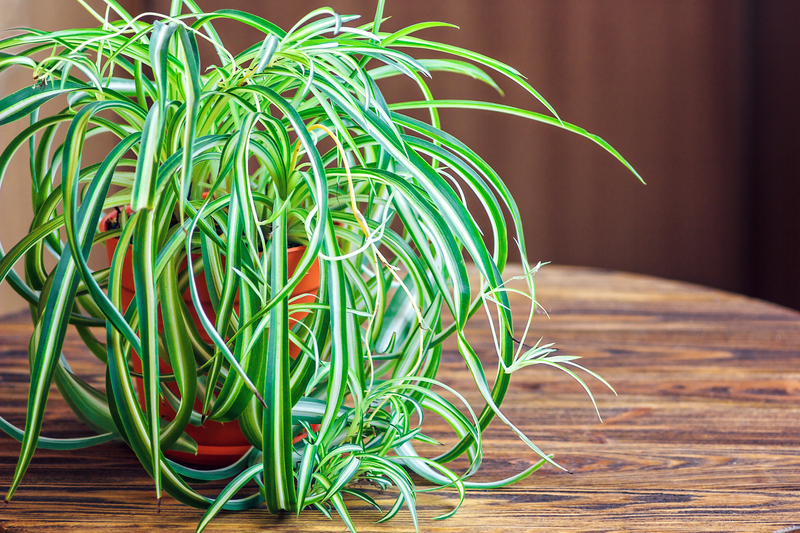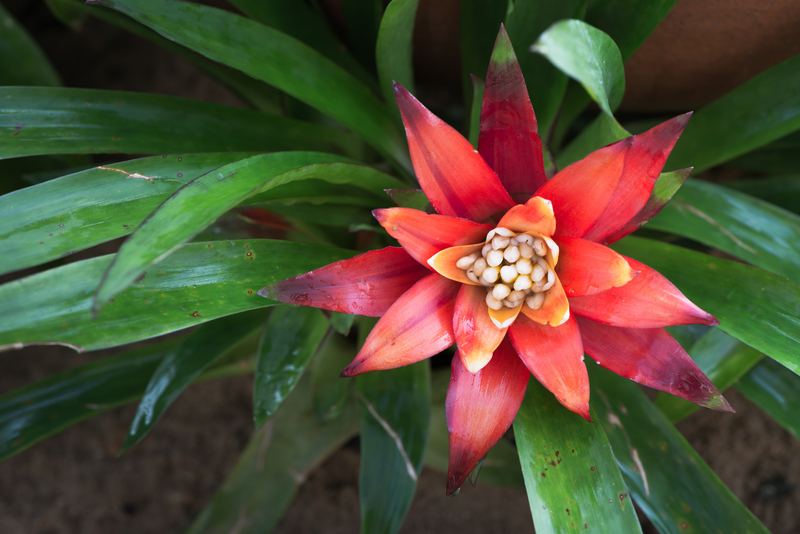Revolutionizing Gardening Through Vertical Gardens
Posted on 05/09/2025
Revolutionizing Gardening Through Vertical Gardens
Vertical gardens, often referred to as living walls or green walls, are dramatically transforming the way we approach urban landscaping and personal horticulture. As cities become denser and outdoor space more scarce, the innovative concept of growing plants vertically continues to reshape both the aesthetics and practicality of gardening. This article explores the extraordinary revolution of vertical gardening, revealing its advantages, design options, best plants, and tips to help you bring your own walls to life.

What Is a Vertical Garden?
At its core, a vertical garden is an arrangement where plants grow upward rather than outward. Typically installed on walls or specially constructed frames, these gardens can grace both indoor and outdoor spaces. Whether meticulously planned like grand installations in public spaces or DIY projects at home, living walls present a versatile, eco-friendly solution for modern gardening challenges.
The Rise of Living Walls in Urban Environments
- Maximizing Space: Vertical gardens revolutionize gardening by making green spaces possible in compact apartments, small offices, and cityscapes where traditional gardens would be impossible.
- Purifying the Air: Green walls are natural air filters--they absorb pollutants and carbon dioxide, revitalizing indoor and outdoor air quality.
- Reducing Urban Heat: Living walls cool buildings and city streets, reducing the urban heat island effect often found in metropolitan areas.
- Enhancing Well-being: Proximity to vertical greenery has been shown to reduce stress and improve concentration, making them a valuable addition to homes and workplaces alike.
Why Vertical Gardens Are Transforming Gardening
The vertical gardening revolution is sweeping across the globe, offering an innovative approach to conventional horticulture. Here's why more people are embracing vertical green walls and why you should consider joining this movement:
1. Efficient Use of Space
Vertical gardens are engineered to thrive in environments where space is at a premium. For urban residents with limited floor area, climbing plants or modular green systems on walls are the perfect solution. A blank balcony wall or a plain building facade transforms into a lush vertical tapestry, providing both functional and aesthetic value.
2. Improved Air Quality and Well-being
The plants in living walls act as natural air filters. They absorb toxins, dust, and CO2, improving indoor air quality. Studies show that introducing greenery, especially in the workplace, can lower stress levels, boost mood, and enhance productivity.
3. Eco-Friendly Thermal Regulation
Green facades cool buildings during hot months by providing shade and lowering surface temperatures. In cold weather, these gardens act as insulators, retaining heat and reducing energy costs. By reducing energy consumption, vertical gardens contribute to a more sustainable planet.
4. Biodiversity and Urban Wildlife
Vertical gardens, particularly in high-rise or inner-city areas, support local ecosystems. Varieties of insects, butterflies, and birds are drawn to the microhabitats created by these living walls, increasing biodiversity in otherwise sterile urban environments.
5. Visual Appeal and Property Value
The lush visual impact of a well-designed living wall adds immense aesthetic value, whether it's an indoor feature or an exterior art piece. Not only do these installations beautify their surroundings, they can also enhance property value--a definite win for homeowners and businesses alike.
Designing Your Own Vertical Garden
From towering green skyscrapers to compact balcony installations, there are many creative ways to design a vertical garden. Here's what you should consider while embarking on your own vertical gardening journey:
Choose Your Location Wisely
- Indoor Green Walls: Perfect for lobbies, living rooms, or kitchen spaces. Ensure your chosen area receives adequate natural light or install suitable grow lights.
- Outdoor Living Walls: Facades, patios, and fences make wonderful outdoor installations. Choose surfaces that support plant weight and allow for irrigation.
Selecting the Right System
- Modular Panels: These are pre-made units filled with growing medium, perfect for both indoor and outdoor use.
- Pocket Systems: Hanging felt or fabric pouches, which are lightweight and suitable for herbs, flowers, or succulents.
- Trellises and Climbing Frames: Train vines and climbing plants on wire panels or mesh structures.
- DIY Recycled Materials: Repurpose pallets, bottles, or gutters for affordable and creative living wall options.
Choosing Plants for Vertical Gardens
The plant selection depends on your climate, light availability, and desired aesthetic. Some top plant choices for vertical gardens include:
- Ferns: Hardy and shade-tolerant, ideal for humid indoor settings.
- Pothos and Philodendrons: Easy-care, trailing species perfect for beginners.
- Herbs: Basil, parsley, mint, and thyme thrive in bright spots and make culinary gardens within arm's reach.
- Succulents: Ideal for sunny locations and low-maintenance gardens.
- Ornamental Grasses and Flowers: Add height, color, and movement.
Step-by-Step Guide: How to Create a Vertical Garden
Step 1: Plan the Layout
Sketch your space and determine the dimensions and orientation of your living wall. Make sure to leave room for maintenance and plant growth.
Step 2: Select a Frame or Structure
Choose a support structure--whether it is a commercial green wall frame, a DIY frame, or a recycled base such as wooden pallets. Aim for durability and support for both the plants and the growing medium.
Step 3: Choose and Prepare the Growing Medium
Options include soil, coconut coir, felt, or hydroponic substrates. Ensure proper drainage to prevent rot and disease.
Step 4: Select and Install the Irrigation System
Automatic drip systems are best for medium to large vertical gardens. For smaller installations, hand-watering may suffice, but be consistent to keep plants thriving.
Step 5: Plant and Arrange
Integrate your chosen plants, placing those with similar light and water needs together. Stagger foliage for visual interest and airflow.
Step 6: Maintain Regularly
Prune, fertilize, and monitor your vertical garden for pests or diseases. Routine care will keep your living wall looking lush and healthy.
Best Practices for Healthy Vertical Gardens
- Light: Match plant choices with light conditions. Consider grow lights for dark indoor spaces.
- Watering: Even watering is crucial. Drip systems with timers work best for larger walls.
- Fertilization: Use diluted, balanced fertilizers during active growing periods.
- Trimming: Regularly trim and shape your plants to avoid overcrowding and encourage new growth.
- Disease Prevention: Ensure proper air circulation, remove dead leaves, and look out for pests or mold. Integrated pest management practices are highly effective.
The Impact of Vertical Gardens on Sustainability
The environmental impact of vertical garden installations extends far beyond beautification. By integrating more green surfaces into our built environment, cities actively:
- Reduce storm water runoff by capturing rainfall and minimizing city flooding risks.
- Improve biodiversity by offering food and habitats to pollinators and wildlife.
- Absorb noise pollution--plants dampen sound, creating quieter, more peaceful environments.
- Mitigate climate change effects by capturing carbon dioxide and releasing oxygen.
- Promote sustainable architecture--green buildings are more energy-efficient and desirable.
Popular Innovations and Global Examples
Iconic Green Walls Worldwide
- One Central Park, Sydney: This residential building features a mix of 35,000 plants forming a vertical jungle over its façade, setting a sustainability benchmark.
- CaixaForum, Madrid: Designed by Patrick Blanc, this living wall is a vibrant cultural and ecological landmark in Spain's capital.
- The Musee du Quai Branly, Paris: Another Patrick Blanc masterpiece, showcasing how vertical gardens can fuse art, architecture, and ecology.
- Bosco Verticale, Milan: Recognized as the "Vertical Forest," these residential towers host over 900 trees and 2,000 plants along their balconies.
Vertical Garden Technology and Trends
- Smart Irrigation Systems: Sensors and automated controls make watering seamless and efficient.
- Hydroponic Vertical Farms: Indoor food production is now possible year-round, even in urban centers.
- Modular and Portable Living Walls: Systems that can be moved, expanded, and modified as needs change.
- Biophilic Design: Integrating nature into architecture to boost occupant health and productivity.

Frequently Asked Questions About Vertical Gardens
Are vertical gardens expensive to install?
The cost varies depending on size, system, and plant selection. DIY vertical gardens can be budget-friendly, especially when upcycling materials, while large professional installations may require a significant investment.
How much maintenance do vertical gardens require?
Most systems require moderate care--regular watering, occasional fertilization, and pruning. Automated irrigation reduces effort significantly.
Do vertical gardens damage walls?
A properly installed system includes waterproof barriers or standalone frames, ensuring no damage to underlying walls.
Can edible plants grow in vertical gardens?
Absolutely! Many herbs, leafy greens, strawberries, and even compact vegetables thrive in vertical setups, giving you fresh produce at your fingertips.
Conclusion: The Future of Gardening Is Vertical
Vertical gardens continue to redefine urban landscaping, offering an ingenious solution to space constraints, environmental challenges, and the growing desire for nature in our daily lives. Whether you're a city dweller with a passion for plants or a business owner looking to make a sustainable impression, the vertical gardening revolution offers countless benefits. As living walls grace more urban spaces and homes, they foster greener cities, healthier people, and a more sustainable planet. Revolutionize your approach to gardening--look up, and let your creativity climb!
Interested in transforming your space? Start small with a DIY herb wall, or dream big with a custom-designed living wall that makes a stunning eco-friendly statement. The sky (and your walls) are the only limit!

